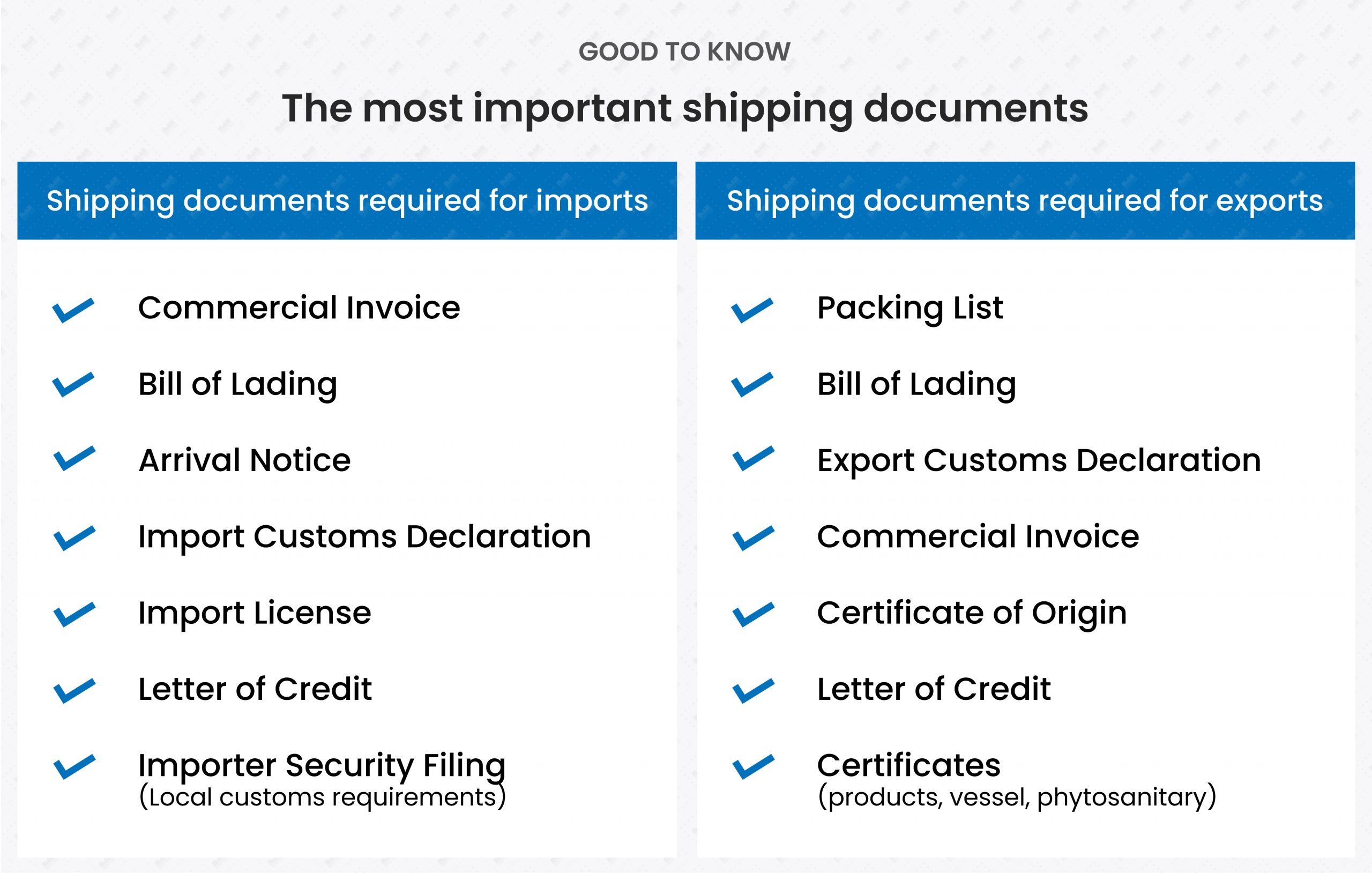Shipping documents you need
19/03/2024While most of these documents are mandatory, some of them depend on the type of cargo you are shipping as well as your origin and destination locations. So, it is important to know which documents are required for your shipment before you start shipping. Here are some of the essential documents required for sea freight:
The most important shipping documents
Bill of Lading (B/L):
The bill of lading is perhaps the most important document in sea freight. It serves as a contract between the shipper and the carrier, acknowledging receipt of the goods for shipment and specifying the terms of transportation. The B/L also acts as a receipt for the goods and a document of title, which can be used to claim the cargo upon arrival at the destination port.
Commercial Invoice:
This document provides details about the goods being shipped, including their description, quantity, value, and terms of sale. It is used for customs clearance, taxation purposes, and as evidence of the transaction between the buyer and seller.
Packing List:
A packing list provides a detailed breakdown of the contents of each package or container being shipped. It includes information such as the number of packages, their dimensions, weight, and contents. This document helps customs officials and port authorities verify the cargo and facilitates the process of loading and unloading.
Certificate of Origin:
The certificate of origin is a document that indicates the country where the goods were produced or manufactured. It may be required by customs authorities to determine eligibility for preferential trade agreements, tariffs, or other trade regulations.
Customs Declaration/Form:
Depending on the origin and destination countries, various customs declaration forms may be required. These forms provide information about the nature, value, and origin of the goods being shipped and are essential for customs clearance.
Insurance Certificate:
While not always mandatory, an insurance certificate provides evidence of insurance coverage for the cargo during transit. It typically includes details such as the insured value, coverage period, and terms and conditions of the insurance policy.
Dangerous Goods Declaration (if applicable):
If the shipment contains hazardous materials or dangerous goods, a dangerous goods declaration must be provided. This document details the nature of the hazardous materials, their classification, packaging, labeling, and handling instructions in compliance with international regulations (e.g., IMDG Code).
Export License or Permit (if applicable):
Certain goods may require an export license or permit from the exporting country’s government. These documents ensure compliance with export controls, sanctions, or restrictions on the exportation of specific goods.
Other Documents:
Depending on the nature of the shipment and the requirements of the countries involved, additional documents may be necessary, such as certificates of inspection, phytosanitary certificates for agricultural products, or transit documents for goods passing through multiple countries.
It’s essential to work closely with freight forwarders, shipping agents, and customs brokers to ensure that all required documents are prepared accurately and submitted on time to avoid delays or complications in the shipping process.



